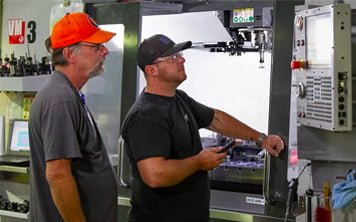By Eric Brisbon
Any business you can think of relies on processes to function. Hopefully, these processes are robust enough to result in cash and profit generation, thus allowing the company to remain in business and prosper. However, there are many businesses whose myopia eventually causes personnel to move on and the doors to close. Often, we see a direct correlation between aging processes and faltering or failing business.
Companies that understood the need to innovate and had the ability to harness, and ultimately transcend, the creative mind to tangible manufactured products or processes have helped reformulate the goods and services we use today. However, innovation is both the key ingredient to success and a prime mover to failure if not viewed with your eyes wide open.
There is an adage that states… “Businesses would be a breeze to run if it wasn’t for people.” The most challenging process to control is always the one that has the most variability… people. The creative mind needed to keep companies vibrant and growing is the exact same thing that can create huge issues in the process that keeps companies moving forward. We all remember the advice to not buy a car built on Mondays or Fridays, which is a very scary proverb, but had elements of truth many years ago. All the quality assurance gurus over the years recognized that people are the prime variable in most processes and went to work to repair it. It’s rather ironic that quality systems initially focused on ways to squelch the human variability for years. Frankly, they still do. How do you take a creative idea and at the same time, institute process practices that never deviate? Those seem to be conflicting goals.
Simply put, a process is a series of steps or activities completed to meet an end goal. As with most things in life, these functions have and will continue, to evolve to meet competitive, economic and social demands. The manufacturing landscape today changes very quickly and what is “in vogue” today becomes passé quickly, although the effects of those lessons or programs remain and create a new and strengthening foundation for manufacturing practices.
There are many different types of quality certifications today, some of which are industry dependant. ISO, TS, AS, tend to focus more on hard parts machining, automotive or aerospace respectively. Certainly, there are others for specialty fields like medical, nuclear, etc. However, they all evolved looking to do one important thing; to take human thinking out of the process equation. Employees building products cannot arbitrarily change something simply because they think they have a better idea. The mantra for years was, “Say what you do and do as you say.” Eventually, as the processes evolved, one additional point was added; “And measure how well you are doing it.” The challenge for companies, however, is to give the employee a formal mechanism to evaluate their idea and then to incorporate that idea into the process in a controlled manner. This process is referred to as Industrialization.
The term normally conjures up subliminal views on a grand socio-economic scale. After all, a seven-syllable word should be reserved for much more important things than a production process. However, you think of the goal, the name is very fitting. The term can also take on a somewhat arguable thought of replacing man with machine. Regardless, the focus of taking an esoteric thought and turning it into a controllable tangible process with little or no variability is the ultimate goal.
There are many tools being practiced and marketed today that help to meet an industrialization goal. Companies face hard decisions of which tools to adopt and practice. Those tools are the bridge in taking the innovation and creativity companies’ desire, and transform it into practices and processes used to create and produce their product. Whether it is APQP and PPAPs and its tenants (FMEA’s PFMEAS, Control Plans, Design Reviews, Parts Submission, 8D’s etc) or somewhat simpler practice (Data and Life cycle management, SPC, Gage control, CAR’s, SCAR’s, etc) it all come down to the same end goals. Monitor and measure your process performance and figure out how to make it better. Sounds like Continuous Improvement….

